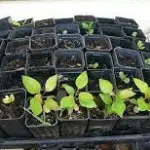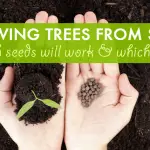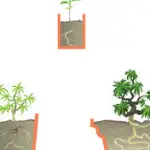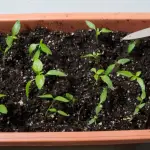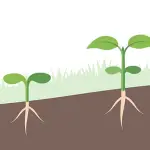
How to Grow Trees From Seed? Growing trees from seeds is a challenge. If you’re looking to make this process easier and increase your success rate, follow these tips for growing trees from seeds.
Not all species of trees will grow from seed, but you can find information on many different species online or at your local library. Read on to learn more about growing trees from seed and how to do it successfully.
If you are interested in learning how to grow trees from seed, there are several things that you need to know before taking the first step toward making this a reality in your yard. First of all, not all types of trees will grow easily from seed.
In fact, some species are so difficult to grow this way that they cannot be grown this way even in controlled environments like indoor greenhouses.
Stratification
Stratification is an important part of the growing process, particularly if you are growing trees from seed. Some seeds stay dormant until they are exposed to a specific temperature and moist conditions.
This is the natural way to grow some plants, and it is easy to mimic this condition indoors. The process involves moistening the materials that will support the seeds, and placing them in a fridge or warm place.
Before planting your seeds, you must stratify them. Stratification of seeds will help them germinate more quickly. For example, spruce seeds should be soaked in room temperature water for two days, then soaked in moist sand for 24 hours.
These should then be placed in a clean plastic bag and stored at 35-40 degrees Fahrenheit. Table II shows the duration of stratification for different types of seeds.
Scarification
Scarification is a process that is necessary for some tree species. While some seeds are already watertight, others need to be scarified to allow water to reach the seed before it can sprout.
Depending on the species, this process can be done manually, using a knife, or with hot water.
Before scarifying seedlings, you should prepare a safe place. A kitchen counter will work well. The seed should be soaked for 24 hours before it can be exposed to the hot water.
During the process, you should keep a knife or a file at a distance from your body to prevent injury to yourself or others. You can also use a flat file instead of a knife. Be sure that the file you use is pointed away from your body, and do not make any cuts into the seed coat.
Warm stratification
Warm stratification is a process where seeds are stored at temperatures between 68 and 86 degrees Fahrenheit. During this time, the seeds will grow and germinate.
The amount of time required varies from plant to plant. Generally, the process will take one to three months. Seeds should be checked frequently to ensure that they are adequately moistened. After this time, you can plant the seeds.
Pre-treating seeds is an important step for the development of your new tree. Different types of seeds will require different types of stratification. Check the label on the seed package to see which type you should use.
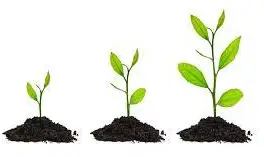
Watering seedlings after the first year
Watering seedlings is an essential part of seed starting. It is very important to provide seedlings with enough light and fertilizer, but it is also important to water your seedlings regularly.
The best time to water your seedlings is when the top layer of soil starts to feel dry. Never leave the soil completely dry. Watering your seedlings properly will ensure strong and healthy plants.
A seedling does not have the ability to store water, so it needs constant moisture. It may need to be watered several times a day.
To test for hydration, press your fingertip into the soil one inch deep. If the soil is wet, your seedling has been overwatered. If it is limp or yellow, it is too wet.
Dormancy breaks
If you are new to growing trees from seed, the first step is understanding what causes dormancy in the first place. In simple terms, dormancy is when a seed is not ready to germinate.
However, it is not always so simple, and you need to know the reasons why different seeds are dormant before you can start planting.
While some seeds are not dormant when they are freshly matured, many others are. Fortunately, research efforts have focused on finding effective methods to break dormancy prior to sowing.
These methods include mechanical scarification, dipping in hot water, and chemical treatments.
Sowing many seeds in a large area
Tree seeds are different than annual or vegetable seeds, so they need to be planted much shallower. Generally, the recommended planting depth is about two or three times the diameter of the seed.
To avoid soil compaction, use a seed-sowing medium with a high level of peat moss or vermiculite. After planting the seeds, shake them lightly to level them.
When growing plants from seeds, it is important to keep in mind that many seeds are dormant. They require a period of stratification before they can germinate.
This stratification process is usually preceded by warm, moist conditions. The seeds that don’t get these conditions will not germinate. Therefore, it’s best to sow the seeds outdoors when the weather is warm and prevent the seeds from becoming damaged by cold.
Repotting saplings after the first year
The first year of tree growth can be stressful for your saplings. Fortunately, most of the nutrients your seedlings need are already in their seeds. You can also give them extra nutrition by adding compost to the soil when they reach about three or four inches. Then, you can repot them to larger containers with more room for their roots.
Repotting saplings will also help prevent them from pot-bound root systems. You’ll need to use larger and deeper pots and new potting soil mix that releases nutrients slowly.
To repot saplings after the first year of growing from seeds, you need to remove the rootball before transferring it to the new container. This is best done with a sharp spade.
Don’t push the spade too far into the soil, as the roots need space to grow. Then, use your foot to firm the soil in the new pot. Make sure to water the newly-potted saplings regularly, so that they won’t dry out.
Conclusion
Trimming your trees is a must every year, right? The trimmings, or “scalp”, are a great source of nutrients (especially nitrogen) and can even help keep your tree healthy throughout the year. You can also use them to propagate new seed-producing trees! To create your own nursery, you need to save the trimmings and throw away the leaves and the flowers if they are not in bloom.
Collect the trimmings in a bag and place them in a plastic container with some moist paper towels on top. Cover the container with a plastic bag and put it in a warm place. In about 12 weeks, you will have new saplings growing and ready to plant! The best time to plant is in the autumn.
If you live in a colder climate, then another good time to plant is in the spring. If you have trouble keeping your bin warm, then try to keep it in a warm area near the window during the day and near a heater in your house at night. Water your nursery well and feed them regularly, especially when you notice them sprouting new leaves.
Thanks for stopping by serconline.
Useful links:
https://serconline.org/knowledge-base/
https://serconline.org/product-reviews/
https://serconline.org/about-us/
https://serconline.org/contact-us/

